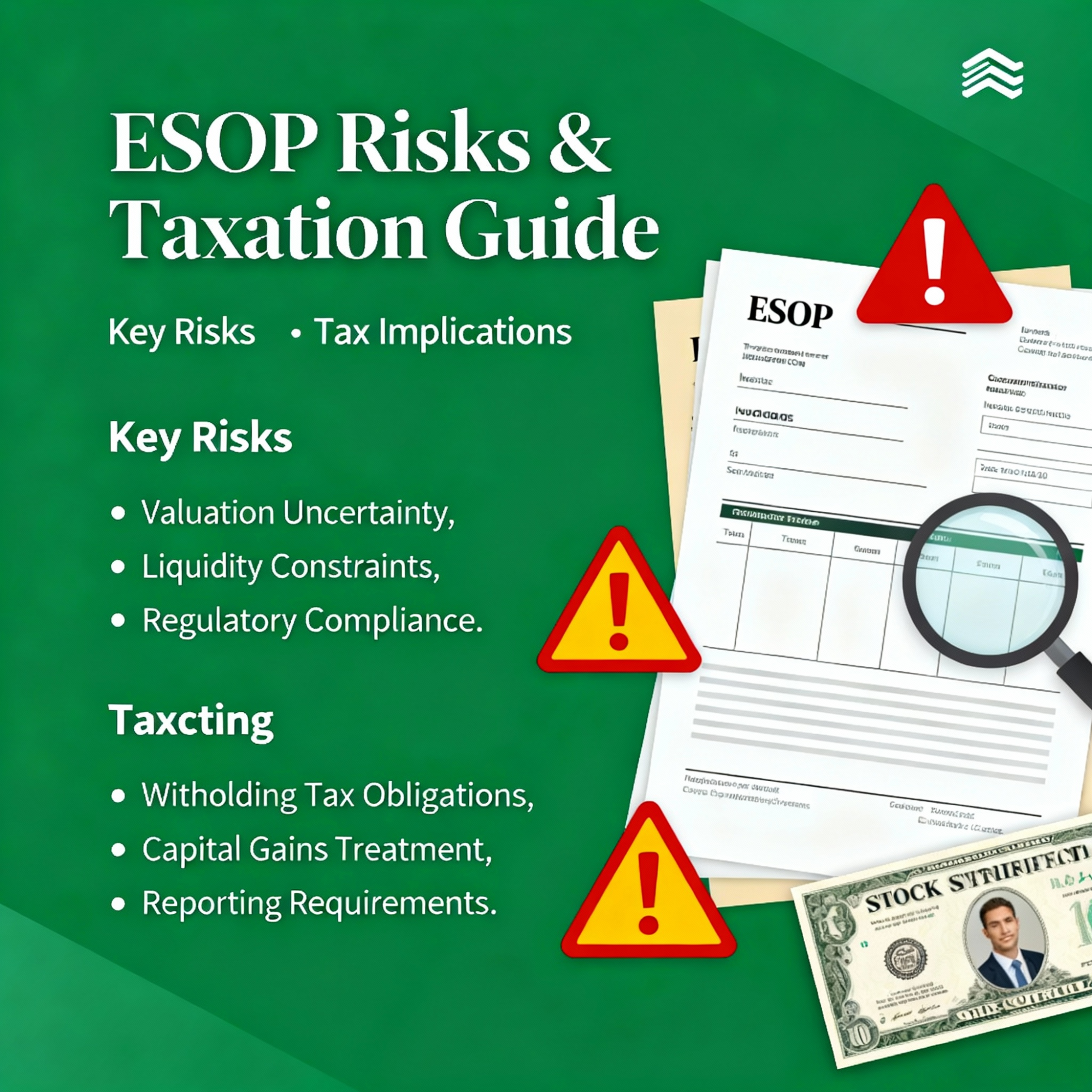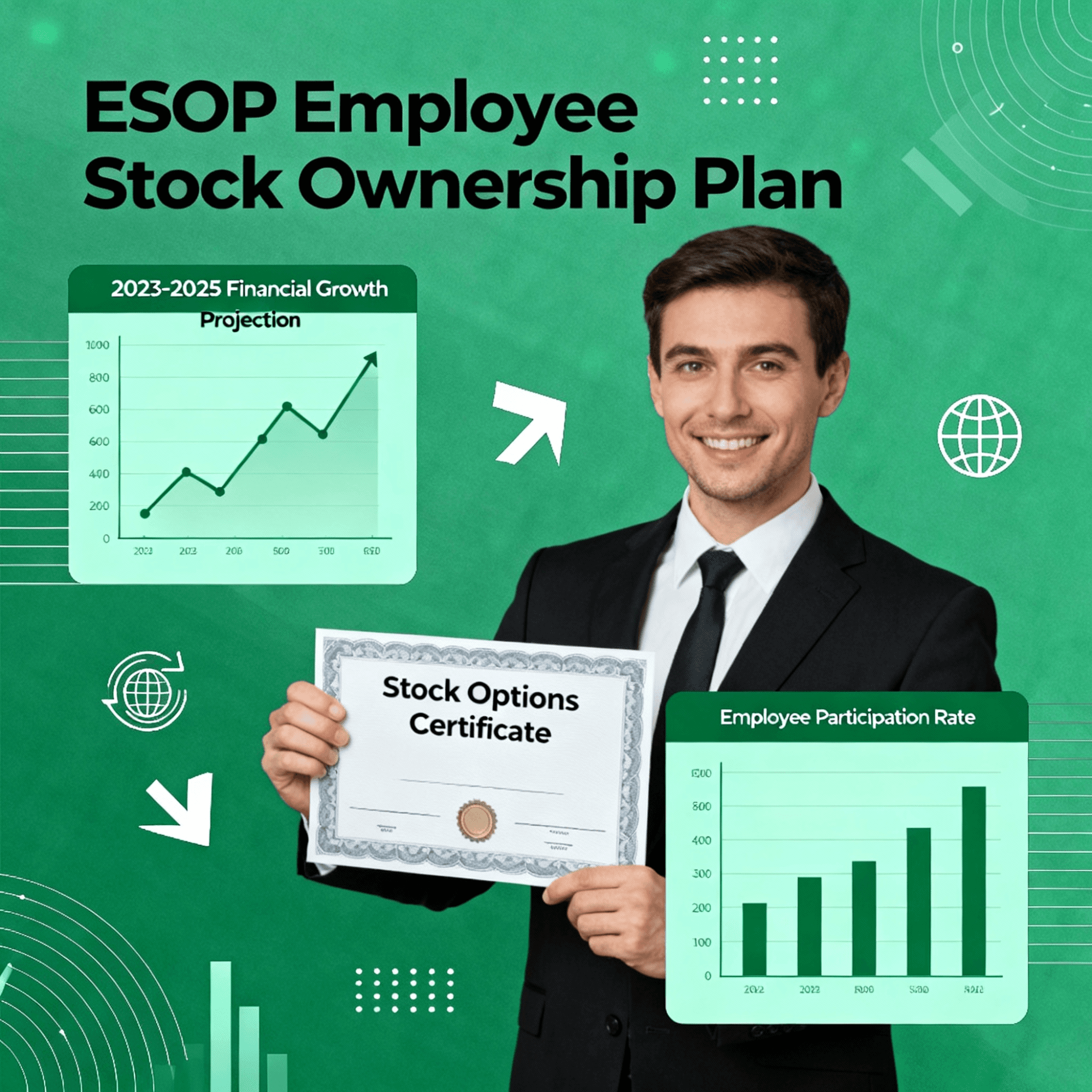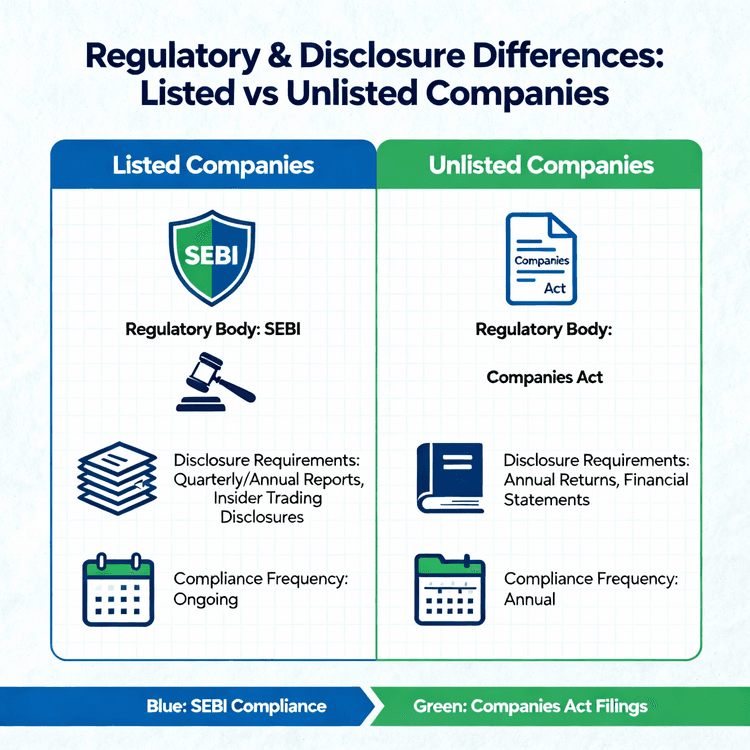What Are ESOP Shares?
Employee Stock Ownership Plans (ESOPs) are benefit plans by which companies give employees the right to buy the company stock at a specific price which is usually lower than the market value. These strategies play various strategic roles such as acquisition of talent, employee retention, performance incentive planning as well as a sense of ownership by the workforce.
ESOPs are incentive plans where employees are granted the right and not compelled to purchase the company shares upon meeting certain requirements. The shares are not transferred at once; this is because the employees are given options which they can exercise after meeting the vesting conditions. This type of structure is suited to aligning employee interests to the company performance since the value of their options is tied to the growth of the company and appreciation of the stock. ESOPs are a component of the compensation strategy of companies in different sectors in India, be it startups or established companies, as a method of competing on talent without needing to drain cash flow.
Regulatory framework of ESOPs will depend on the type of company. SEBI (Share Based Employee Benefits and Sweat Equity) Regulations, 2021 are applied to listed companies and the companies act, 2013 to unlisted. ESOPs also have to follow guidelines of the Income Tax Act in Section 17(2)(iii) to be tax-neutral. This is a detailed regulatory framework that guarantees equitable allocation and eliminates discrimination among workers and upholds fiduciary rules.
How Are ESOP Shares Allocated to Employees

The ESOP allocation process has a number of systematic steps aimed to achieve equitable and prudent dispersal of equity ownership. Companies initiate by crafting overall ESOP policies which describe eligibility requirements, allocation plan, vesting, period of exercise and terms of repurchase. These plans have to be approved by the board of directors and shareholders by special resolutions especially in listed companies within the SEBI regulations.
Grant Process and Eligibility: Each organization establishes the eligible employees according to aspects such as position, performance, tenure and strategic value to the company. The Companies (Share Capital and Debentures) Rules, 2014, provide that permanent employees, directors and employees of subsidiaries are eligible participants. The promoters and directors with over 10 percent of equity are usually excluded, but startups are not yet 10 years old when they start their incorporation. The allocation methodology usually takes into account the compensation levels and the more highly compensated the individual the greater the number of shares they obtain, although the IRS limits unfairly favored benefits to highly compensated employees.
Vesting and Exercise Mechanisms: Once approved, shares are held in trust during the vesting period which is usually one to five years with non-linear vesting schedules (25 percent per year over four years). SEBI regulations require a one-year minimum vesting period of listed companies. In this time, employees will be obligated to stay in the organization to stand a position to exercise their options. When vested, employees will be able to buy shares at the decided-upon exercise price irrespective of the value in the market.
Valuation and Share Pool Determination: Professional valuation determines fair market value for ESOP pricing, with companies typically reserving 10-20% of total equity for employee stock options. The allocation balances employee motivation with existing shareholder dilution concerns. Companies must maintain detailed records of grants, vesting schedules, and exercises while providing clear communication about program benefits, risks, and tax implications.
Difference Between Sweat Equity Shares and ESOP
As much as both the mechanisms avail company ownership to the employees, the difference in the structure of sweat equity shares and ESOPs is significantly different, their purpose and implementation. It is important to know these differences whether it is the employer who is planning compensation schemes or the employee who is analyzing their remuneration package.
Structural and Timing Differences: ESOPs provide share options to buy after a set of time following a predetermined set of rules and timetables, whereas sweat equity shares are immediately assigned to employees after issuance. ESOPs are issued on a cash basis (the agreed upon exercise price), but sweat equity may be issued on other basis (non-cash basis), typically intellectual property, technical expertise, or know-how. The date at which ownership is transferred varies widely - ESOP owners only become shareholders when they exercise options, whereas sweat equity recipients do so immediately.
Purpose and Recognition: ESOPs are mostly utilized as retention and motivational devices that promote long-term commitment by providing schedules of the vests. Sweat equity shares are an excellent remuneration style that particularly compensates outstanding contribution, intellectual property, or specialized skills that are of a great value to the company. This renders sweat equity more appropriate in making past performance more visible whereas ESOPs considers future performance and retention.
Regulatory and Compliance Framework: The regulatory treatment varies substantially between the two mechanisms. Sweat equity shares have mandatory three-year lock-in periods and are limited to 15% of existing paid-up capital annually or ₹5 crores in value, with total cumulative issuance capped at 25% of paid-up capital. ESOPs have company-determined lock-in periods with no statutory limits on issuance quantity. Sweat equity pricing requires registered valuer approval, while ESOP pricing follows company-set exercise prices within regulatory guidelines.
Tax Implications: There is a large difference in taxation between mechanisms. The ESOP taxation is done in two phases, first as a perquisite tax (when the option is exercised) and as a capital gains tax (when share sales). Taxation of sweat equity shares happens as soon as they are allotted at the difference between the fair market value and the consideration paid as salary income and the capital gains tax is paid after sale.
Benefits of ESOP Shares for Employees and Companies
Employee Benefits and Wealth Creation: ESOPs significantly expand the financial possibilities of their employees means of direct ownership interests in their companies. The more the company valuation is boosted, the more the employees gain share appreciation in a firm that may generate a lot of wealth in the long run. This is especially effective in fast-growing businesses or start-ups where ESOP value can increase tremendously in value with the original employees. The ownership system encourages a true sense of involvement and motivation, since the workers are the ones to enjoy the prosperity of a company because of their equity share.
Employee Engagement and Retention: ESOPs instill a sense of psychological ownership to employees that have great influence on employee behavior and commitment. Employees with equity interests are also likely to think and behave like owners of the business, resulting in better decision making, innovation and productivity. This feeling of ownership is reflected in the reduced rate of attrition since it can compel employees to stay with the company during the vesting periods to realize equity of the company. When personal financial interests coincide with that of the company, a strong incentive to endure long-term success, as opposed to short-term benefits is developed.
Company Benefits and Strategic Advantages: ESOPs are an effective tool of talent acquisition and retention, especially to start-ups and growing companies that have to compete with more established companies. ESOPs help businesses to recruit good candidates who would otherwise be willing to receive higher cash payments thus saving cash flows in periods of growth. This is particularly important to their early stage companies that require maintaining capital to support operations and growth and yet have to compete to acquire the best talent.
Succession planning and transitioning of ownership is also achieved through the use of ESOPs especially within closely held companies. They are a way of allowing founders to take ownership off slowing down with continuity in operation. Also, the model of shared ownership could enhance the company culture and contribute to cooperation and long-term decision-making of its employees who recognize that they have a direct interest in the company only after its success.
Risks and Limitations of ESOP Shares

Financial and Market Risks: There are inherent investment risks that ESOPs have, and employees should have to take into consideration. In comparison to fixed salary elements, ESOP values change in accordance with the company performance and the market conditions. When a firm stock becomes undervalued because of poor performance, market crashes or industry pressures, the employees might have little or no financial gain out of their options. This is a danger that is especially acute among employees in startups or high-volatility industries when business valuations may shift significantly.
The concentration risk presents another challenge. Through ESOPs, employees tend to have large shares of their wealth and retirement savings in stock of the company, leading to potentially harmful over-concentration on one investment. In case the company goes bankrupt or experiences dire financial problems, the employees risk losing the job, as well as being deprived of all their equity savings. This is a concentration risk that goes against the basic principle of diversification and may expose employees to financial risks.
Liquidity and Exit Challenges: Liquidity issues are one of the biggest constraints, especially of those who work in unlisted companies. Whereas shares of listed companies may be sold in the open market, the unlisted shareholders of the company will find it difficult to sell their shares to the market and are left with illiquid assets despite their paper gains. Companies can establish buyback programs, which are usually conducted with a set schedule and price constraint therefore restricting employees to access their wealth when applicable.
Tax Complexity and Timing Issues: ESOP taxation poses a lot of complexity and possible financial burden to employees. The perquisite tax will be paid when options are exercised irrespective of whether employees sell shares off at once or hold the shares. This may lead to large tax burdens which have no cash flow especially when the share values ultimately are low. To ensure that exercise timing is not a taxable event, employees need to exercise great caution in scheduling their exercises, and they may need the help of a tax advisor, to maximize their plans.
The dual taxation structure - perquisite taxation at exercise and capital gains taxation at sale - can have a huge impact on net returns to employees. Capital gains are taxed at a higher rate (15% on listed shares is considered as a short term gain) and capital gains of long term are given a higher rate (10% above 1 lakh annually). This is too complex to do any basic tax planning to gain maximum after-tax benefits out of ESOP participation.
Vesting and Employment Dependencies: ESOP benefits are fully contingent on the continued employment by means of vesting. Employees that depart companies prior to full vesting lose unvested options, which could be of high value. This dependency may unleash a set of so-called golden handcuffs of career mobility, especially where significant unvested equity is being held. This dependency can be a strategic retention tool used by companies but it limits employee career choices and causes tension at the workplace.
Conclusion
ESOPs are potent tools of matching the employee and company interests and providing the chances of generating wealth and developing the business further. Their organized form of equity participation places a range of gains such as increased motivation, retention and financial upside to workers as well as companies providing cost effective talent acquisitions and succession planning system. The difference between ESOPs and sweat equity shares reflects the need to know various equity compensation packages, which have different strategic functions in organizations.
Nonetheless, ESOP implementation must be done with due cautions to internal risks such as market volatility, concentration risk, liquidity limitations, and complexity of tax. There has to be a wholesome policy designed by companies with proper communication, equitable methodologies of allocation and proper professional advice so as to get maximum benefits with minimum dangers. Employees, however, must consider ESOP participation with the knowledge of the opportunities and risks involved and hopefully with professional tax and financial planning advice so they can make the most of their plans.
The regulation of ESOPs remains in a dynamic mode, with the current SEBI regulations increasing the efficiency of the procedures without compromising the level of protection of the investors. With the rise of ESOPs as a common feature in India-based companies, especially within the startup-based ecosystem, it will be necessary to comprehend their mechanics, advantages, and drawbacks to help employers and employees to negotiate the new system of compensation. Open communications, equitable execution, and correct setting of expectations both on potential rewards and on the risks are the keys to successful ESOP programs.




